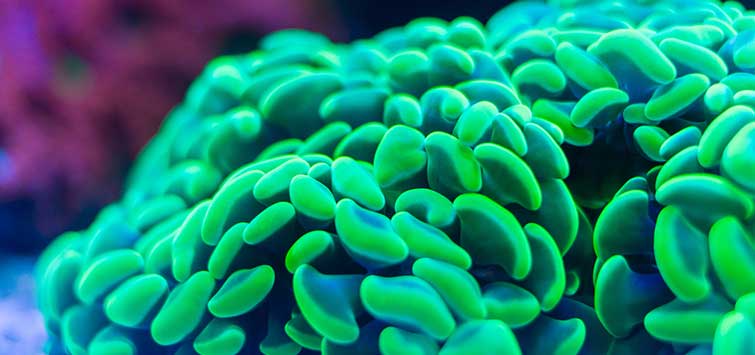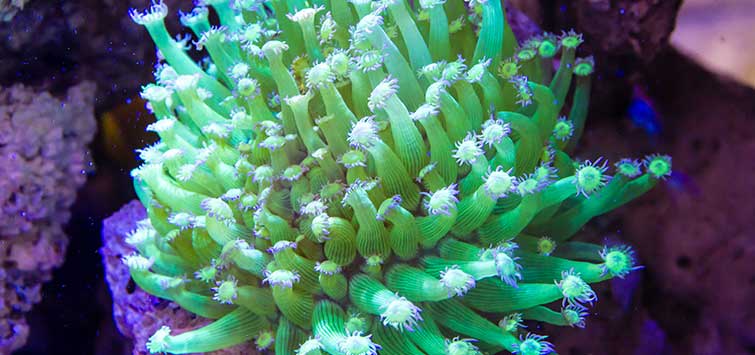Echinophyllia aspera
Common Names: Plate coral, scroll coral, chalice coral, flat lettuce coral
Phylum: Cnidaria
Class: Anthozoa
Order: Scleractinia
Family: Pectiniidae
Range: Indo-West Pacific and Red Sea, including western, northern, and eastern coasts of Australia to Tahiti, and north to southern Japan
Natural Environment: This is a fairly common photosynthetic stony coral found in most reef environments, especially in the lower reef slopes and fringing reef areas. Tends to form encrusting plates and folds, with its surface having rounded ridges. Its corallites are slightly
Water Requirements: Calcium 380 to 430 ppm, alkalinity 3.5 meq/l, pH 8.1 to 8.2, specific gravity 1.024 to 1.026, Mg approx. 1272 ppm, phosphate < .05 ppm, and a temperature range of 74° to 82°F (23° to 27°C).
Captive Care
Even though a naturally fairly common species, it is only occasionally available in the trade. And when found in local shops, is often misidentified. However, the species in the photo above was specifically acquired as this particular genus and species from a noted collector.
Lighting
This is a very hardy coral and can be placed in areas with moderate to bright light, i.e., 4 to 5 watts per gallon via fluorescent or metal halides, and should receive moderate water movement to remain healthy. It also tends to keep its original coloration even under varying amounts of light in captivity.
Aggression
In the wild it can form massive tiers of plates and cover wide areas, sometimes meters across. It is said that those in this family can develop sweeper tentacles, therefore it can be considered quite aggressive. Nevertheless, I have personally never seen sweeper tentacles on this specimen, neither during the day nor at night. Yet I do advise sufficient space be given, as this species under the right conditions can be quite fast growing and can quickly shade any species below it. It also is capable of chemical aggression; and so some thought should be given to its “downstream” neighbors and the use of activated carbon in the system.
Growth
Since this is a photosynthetic stony coral, it does not require direct feeding, yet can be fed with cyclops when its feeding tentacles are displayed during the nighttime hours. Nevertheless, for adequate growth, monitoring water quality is a must. The coral pictured above has been in several different tanks over the past three years. In a well-monitored tank, it grew quickly. When moved to a local shop where water quality, i.e., calcium and alkalinity, was rarely ever monitored (if at all), its growth slowed considerably. And when moved from there to a customer’s tank with carefully monitored and adjusted-as-needed water quality, its growth greatly accelerated, though it appears to be quite fragile around its outer plate edges. Therefore, I highly recommend keeping the calcium and alkalinity within a balanced state, along with the proper level of magnesium in relation to the existing specific gravity.

.png?h=595&iar=0&w=2781&hash=5FD5E69473BCC22199FBFA2FB71B6033)



